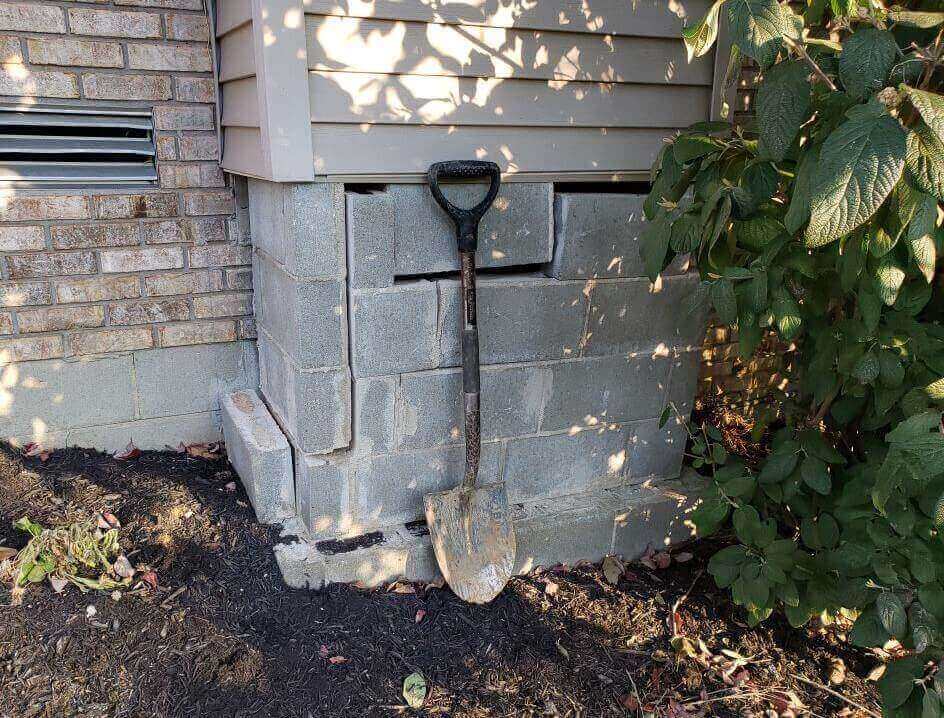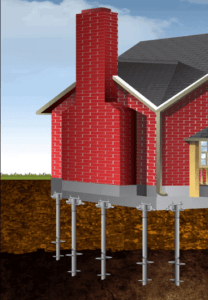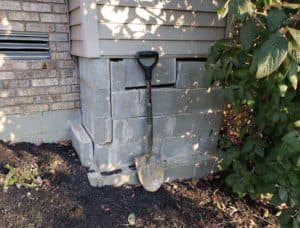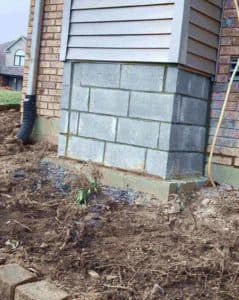
Originally posted 12/19/19, updated 12/14/22
When your doors begin to stick, or when you see cracks in your foundation, you know something has gone awry. It’s critical that you take action quickly, to restore the structural stability of your home. In this article, we’ll thoroughly discuss the best repair method, the costs associated with it, and the variables that need to be taken into consideration.
Acculevel has been repairing foundations since 1996, and experience has shown us that the best method to fix a settling foundation is by employing helical piers. Other companies may offer to use push piers for this type of repair, but these piers apply extra stress to your foundation that is not necessary. For a detailed explanation of the difference between push piers and helical piers, please check out this comparison piece.
Piers should be thought of as an investment in your home, as they can indirectly increase your property value. Insuring or selling your home with an unstable foundation is virtually impossible. Insurance companies will require the repairs be made before insuring the home; likewise, a potential buyer will make their offer contingent on the work being completed and approved by the home inspector.
A helical pier is a steel shaft with helical (screw-like) plates on the end. This pier is screwed through the ground outside of your home until it hits stable, undisturbed soil. This is below the frost line and the fluctuating water table; this keeps the pier stabilized and immobile. A pressure gauge system is used to determine the required depth, specific to your property and for the unique soil conditions under your home.

The pier has a steel bracket that is positioned under your foundation’s footing, much like the seat of a chair, to give the wall support and hold it in place. This bracket allows the pier to leverage the resistance between the deep solid ground at the bottom of the pier and your home.
The following pictures were taken by an Acculevel crew member during pier installation.
 Before
Before
 During
During
 After
After
In most cases, piers are installed along the outside of the settling wall, every 5-7 feet across the affected area. If the piers can be machine dug, pricing is $1750-2200 per pier. This pricing is given in a range because it needs to cover the details specific to your home’s layout and design.
The installation has to make allowances for access, which means considering your landscaping and concrete slabs: sidewalks, driveways, porches, patios, etc. If the piers have to be dug by hand, the price range increases to $1900-2700.
FYI: All prices include both material and labor.
For a look at the installation process, here is a demonstration:
Another factor to consider is the water table/soil composition. A standard helical pier is 21 feet long. That’s usually sufficient in Indiana, where the ground is relatively flat and has a consistent soil composition But you may need longer piers if you live in an area with: softer soil, soil with significant amounts of organics, or you live in a naturally high water table. Extra depth costs are generally about $25 per foot.

Repairing your foundation gives you structural stability, peace of mind, and better resale value for your home. Helical piers come with a life-of-structure warranty; as long as your home is standing, those piers are not going to move.
This warranty is transferable from one owner to another. This helps add to your overall property value because it demonstrates to buyers that you have taken action to resolve the issue and it is guaranteed to last.
[box type="info"] Please be aware that fixing a settling foundation wall does not automatically mean lifting it. Depending on your goals, and the condition of your home, the optimal outcome may be to stabilize and secure the foundation. Trying to obtain too much lift can put more stress on your home, and cause structural issues like cracking drywall.[/box]
Find an experienced local foundation company, and make an appointment. Sure, this is sensible advice, but when you are considering piers, it is of critical importance. You need someone who can properly and thoroughly evaluate your home. In some rare instances, piers need to be installed around the entire home. In others, a home may only need piers in one corner.
If your home’s structural issue is not correctly diagnosed, the piers may not be installed in the correct location; this wastes your money while leaving you with an unsound foundation.
Before you sign a contract for any service, you should always verify the company is reputable, insured, and accredited by the Better Business Bureau. If you live in Indiana or the surrounding states, contact Acculevel. Established in 1996, we specialize in foundation repairs.
If you have noticed sticking doors, cracks in the drywall or in the foundation itself, you can request a free estimate. An experienced project advisor will evaluate your home and recommend the best course of action for you, to keep your home strong and healthy for years to come.
We have also created a free tool that any homeowner can use to see what could be causing problems in your home and how to fix it. Identify problems, explore solutions, and get advice on how and when to take action with our Symptom Checker.
[DISPLAY_ULTIMATE_SOCIAL_ICONS]